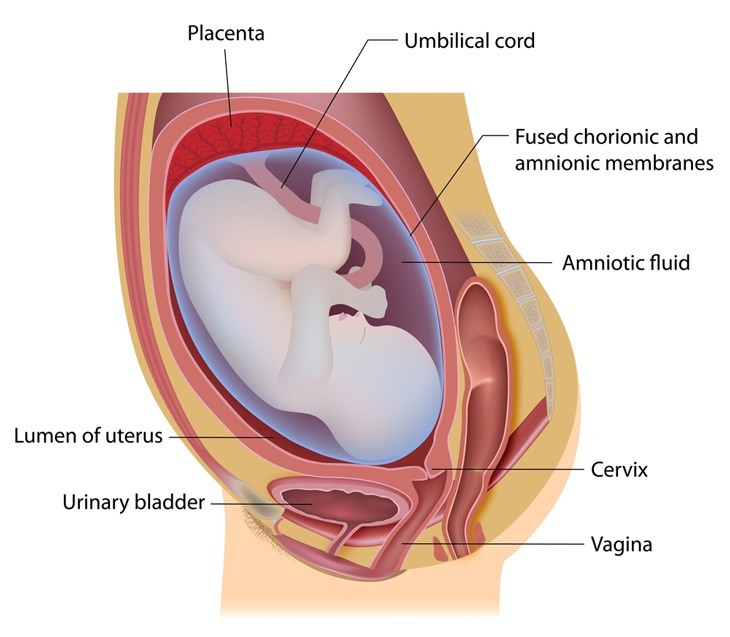There are a lot of things you have to consider when you’re pregnant, especially if it’s a very delicate pregnancy. Amniotic fluid leak is one of these things. Are you encountering vaginal release that feels like a little spout? Is this bringing about a humiliation to you at your work environment? Indeed, on the off chance that you identify with these circumstances, then reading this article can help you.
Things You Need to Know About Amniotic Fluid
Amniotic liquid leak is a standout amongst the most widely recognized issues confronted by a pregnant lady. If not treated in time, it could represent a noteworthy risk to both mother and tyke. Would you like to know the complexities that releasing amniotic liquid can bring about in your pregnancy?
Amniotic liquid is the warm, liquid pad that ensures and backings your infant as they develop in the womb. This imperative liquid contains:
- Hormones
- Immune framework cells
- Nutrients
- Hormones
- Your child’s pee
At its most elevated amount, the amniotic liquid in your belly is around 1 quart. Following 36 weeks of pregnancy, your liquid levels begin to diminish as your body gets ready for your infant’s conveyance.
At the point when your specialist performs ultrasounds preceding delivery, they’ll appraise the measure of amniotic liquid your child is encompassed by. It’s conceivable that the liquid may begin to spill sooner or later.
On the off chance that an excessive amount of liquid begins to spill out, this is known as oligohydramnios. The liquid can likewise spout out because of the cracking of the amniotic sac. This is known as the bursting of films.
At times it can be hard to discern whether the liquid you are spilling is amniotic liquid.
What’s viewed as a typical level of amniotic liquid?
The measure of amniotic liquid padding your infant tends to increment as your pregnancy advances, achieving its most astounding point at around 36 weeks.
Liquid levels all through your pregnancy could be around:
- 60 milliliters (mL) at 12 weeks growth
- 175 mL at four months development
- 400 to 1,200 mL in the vicinity of 34 and 38 weeks growth
Your specialist can quantify your amniotic liquid levels utilizing an ultrasound. There are two counts on approaches to quantify, known as the amniotic liquid file (AFI) or the most extreme vertical pocket (MPV).
Specialists view your liquid levels as low if your AFI is under 5 centimeters (cm) or your MPV is under 2 cm.
Side Effects of Amniotic Liquid Leak
Think about your amniotic sac like water balloon. While it’s conceivable to break it, bringing on a solid spout of liquid (known as your water breaking), it’s additionally conceivable that a little opening could create in the sac. This can bring about a moderate break of amniotic liquid.
When you’re pregnant, you may have a craving for everything releases: Your bladder gets to be distinctly fuller and quicker, and you may spill pee. Your vaginal tissues likewise may deliver additional liquid to help your infant pass all the more effectively. So it can be hard to figure out whether liquid is pee, amniotic liquid, or vaginal liquid.

How to Know if It’s an Amniotic Fluid Leak (And What to Do)
Step 1: Know the Characteristics
It is important that you know how to distinguish amniotic fluid from other normal discharges. Amniotic liquid may have a couple of the accompanying qualities:
- Clear, white-spotted, or potentially tinged with bodily fluid or blood
- No scent
- Regularly soaks your clothing
- Ordinarily, pee will have a smell. Vaginal liquid is generally white or yellow in shading.
Step 2: Empty Bladder
Another way you can try to figure out whether the liquid is amniotic liquid is to first empty your bladder. Put a clean cushion or undies liner in your clothing and analyze the liquid that is on the cushion following 30 minutes to 60 minutes. On the off chance that the liquid is yellow in shading, it’s conceivable pee. In the event that it isn’t, the liquid could be amniotic liquid.
Step 3: Put Pantyliner
Another alternative is to put on a cushion or underwear liner and focus on holding your pelvic floor muscles tight, as though you are attempting to stop your pee stream. On the off chance that you do this and don’t perceive any liquid on the cushion, the liquid you are seeing is likely pee.
Step 4: (Optional, Depending on Situation)
Call your specialist quickly if your liquid seems green-tinged or earthy yellow. This can show your child has had a solid discharge in the womb, which can bring about breathing inconveniences when they are conceived.
You ought to likewise call your specialist in the event that you think your layers may have burst, otherwise called your “water breaking.” You ought to take note of the shade of the release to tell your specialist. You’ll likely be told to go to the healing facility.
Step 5: (Next Steps)
An expected 33% of amniotic liquid is supplanted each hour. This implies your infant won’t be “dry” regardless of the possibility that you’re releasing amniotic liquid. In any case, it’s conceivable that cracked layers could mean your conveyance is inescapable as well as that microorganisms could be brought into your uterus. Hence, it’s vital to look for treatment on the off chance that you think you could release amniotic liquid.
Risk Factors of Amniotic Liquid Leak
Releasing amniotic liquid can be hazardous for you and your infant anytime amid your pregnancy. While you may normally release a little measure of liquid, losing a lot of can be destructive.
Releasing amniotic liquid amid the first and additionally second trimesters can bring about complexities, including:
- Defects
- Miscarriage
- Untimely birth
- Stillbirth
Amid the third trimester, low levels of amniotic liquid can bring about:
- Challenges amid labor, for example, pressing the umbilical string, which can influence an infant’s capacity to get oxygen
- Expanded hazard for cesarean conveyance
- Hindered development
Treatments
More often than not, the treatment for your leaking amniotic liquid will differ in light of your phase of pregnancy. On the off chance that you are close full term, your specialist may recommend forced delivery. On the off chance that you are not yet by then, they may consider one of the accompanying medicinal treatments consolidated with close observation.
Before starting a treatment plan, your specialist will figure out if the spillage is really amniotic liquid. On account of minor tears, they may essentially screen your advance as it will recuperate without anyone else’s input. Major or huge tears, then again, will require prompt therapeutic consideration and also administration treatments went for forestalling pregnancy intricacies.
I hope that your questions are answered. Again, these are the points that you should remember. Immediately call your doctor if the fluid appears brownish yellow or green-tinged. At 36 weeks pregnancy, fluid levels decreases because your body starts to prepare itself for the delivery. Finally, remember that leaking a small amount is natural but it’s alarming when you lose too much.
Please send us your questions if you have inquiries about amniotic fluid flow. Also, don’t forget to drop your comments below if you have any. May your pregnancy is healthy and your delivery as successful as we hope it to be.



